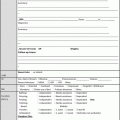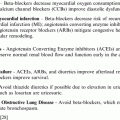Fig. 1
Genogram of the extended Jones Family
A review of the genogram illustrates Grandma Ethel’s likely belief that “in our family we take care of people at home” and the likely pressure this family story creates for daughter Beth and daughter-in-law Heidi. The genogram also provides a “snapshot” of potential family resources and likely sources of conflict.
Families change over time and the genogram that has been placed in the chart needs to periodically be updated. Reference to the genogram before returning a phone call or participating a family meeting can quickly refresh one’s memory of family structure and dynamics, making the call or meeting more productive and efficient.
When There Are Cultural Barriers
Like unexamined attitudinal issues, cultural barriers can also create blind spots and interfere with success when working with families. In an age where political correctness sometimes trumps confronting a problem directly, examining possible cultural issues can be intimidating.
Begin by examining your personal and professional cultures. What assumptions might others make based on knowing you are an African-American physician, or a Filipino nurse? If things often thought about a cultural or professional group were true, how much would they apply to you?
Next, consider the cultural background of the resident and his/her family. What do you know, or think you know, about the culture in question? No one expects a health care professional to have an intimate knowledge of each resident’s culture, but some basic knowledge is useful. Professional colleagues from the culture of the resident may be helpful. Other resources include, “CultureGrams ” (www.culturegrams.com) ©2007 ProQuest-SCA and Brigham Young University [14], which provide concise, reliable and up-to-date reports on more than 200 countries, and your local librarian. Just as you may recognize yourself as being an American physician, but meet none of the stereotypes, you cannot assume the resident and the resident’s family will be well characterized by generalizations made about their culture. A useful way to begin to address this is to ask; “I have heard that it is common in Bulgaria for adult children to care for their elderly parents. How true is that for your family?”
Sometimes, despite being knowledgeable and respectful of the family and the family’s cultural background, communication still seems ineffective. In this case it is usually helpful to find a mutually acceptable mediator. This person selected is often a community or religious leader from the cultural group involved. This person can often “bridge the gap” between the prevailing and/or professional culture and the minority and/or lay culture.
Effective communication when a translator is necessary requires behaviors that may not be intuitive. When a translator is being used it is important to talk directly to the resident and not to the translator. “How are you feeling today?” is more likely to engender engagement and a meaningful response than “Ask her how she is feeling today.” Talking directly to the resident also makes the translator’s job easier.
Professional translators are preferred over use of family members, although financial and logistical barriers often force the use of untrained family members. Companies offering telephone and computer-based translators can be found by searching “language line” on the Internet. Prices and available languages vary.
Summary
A practitioner seeking to achieve excellence in working with families in the post-acute or long-term care setting needs to critically examine his or her attitudes towards families, and display detailed knowledge of PA/LTC medicine, the resident, the family system, facility, and IDT function. Excellence can only be achieved through the development of nonintuitive communication skills, including communication in the setting of a family meeting. The ability to create and utilize a genogram is a powerful asset that will enhance communication with families.
Stay updated, free articles. Join our Telegram channel

Full access? Get Clinical Tree





